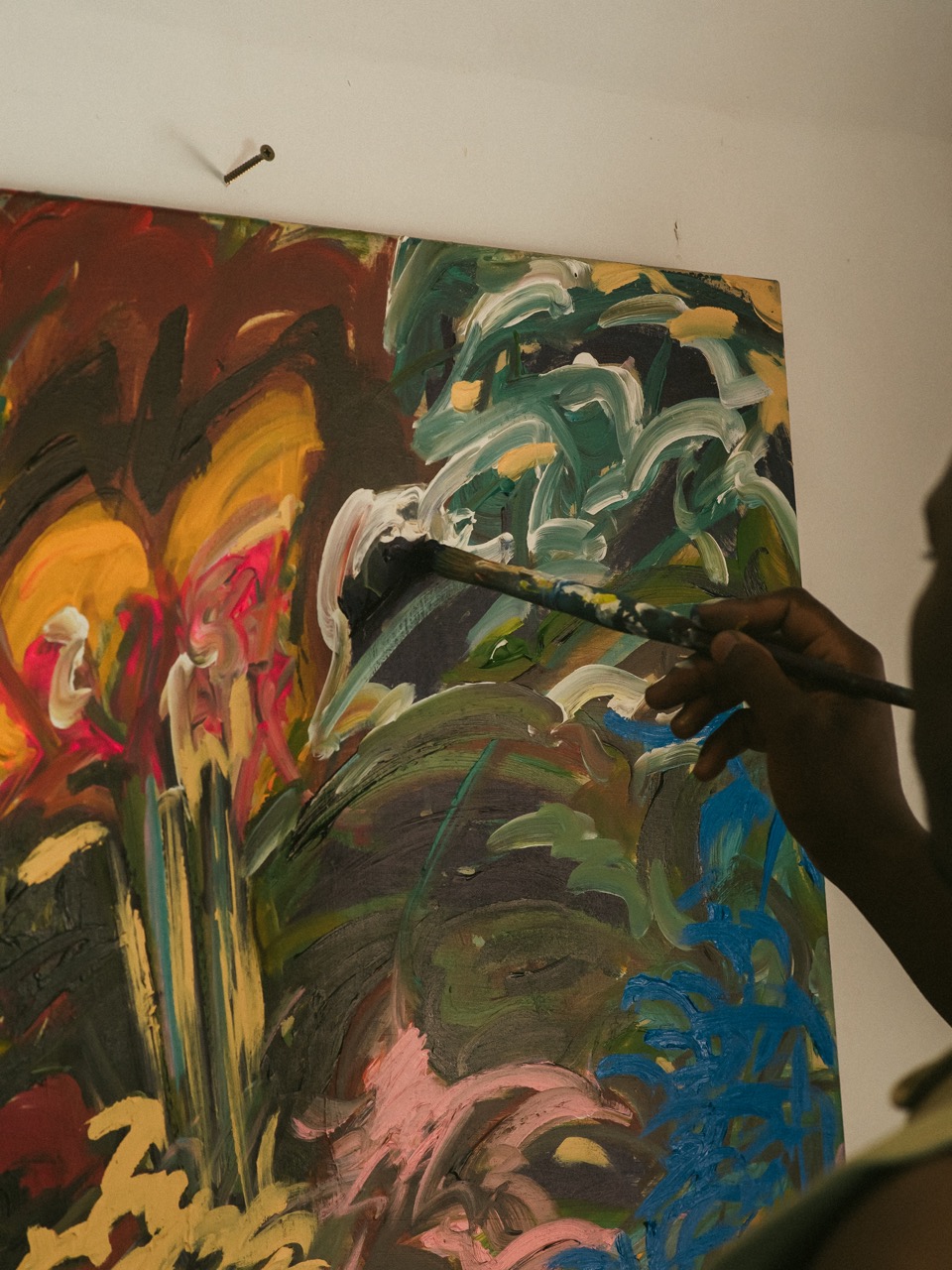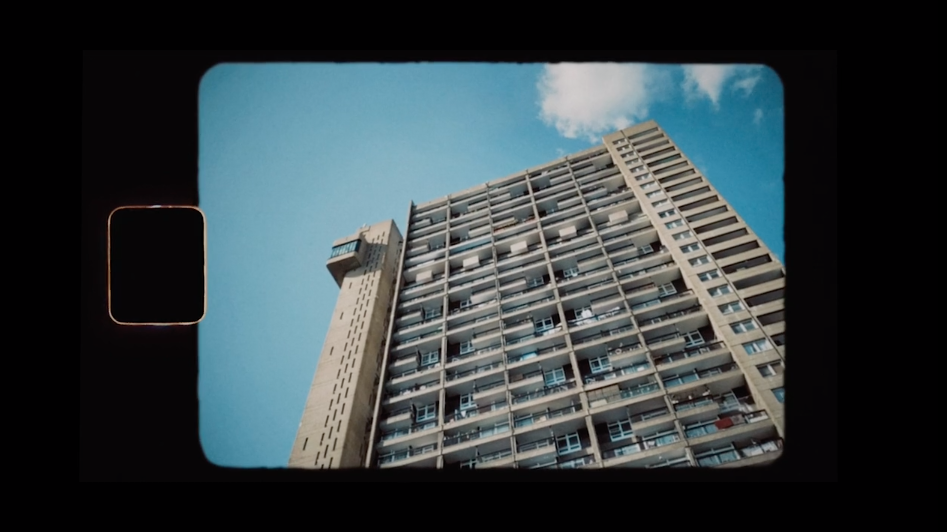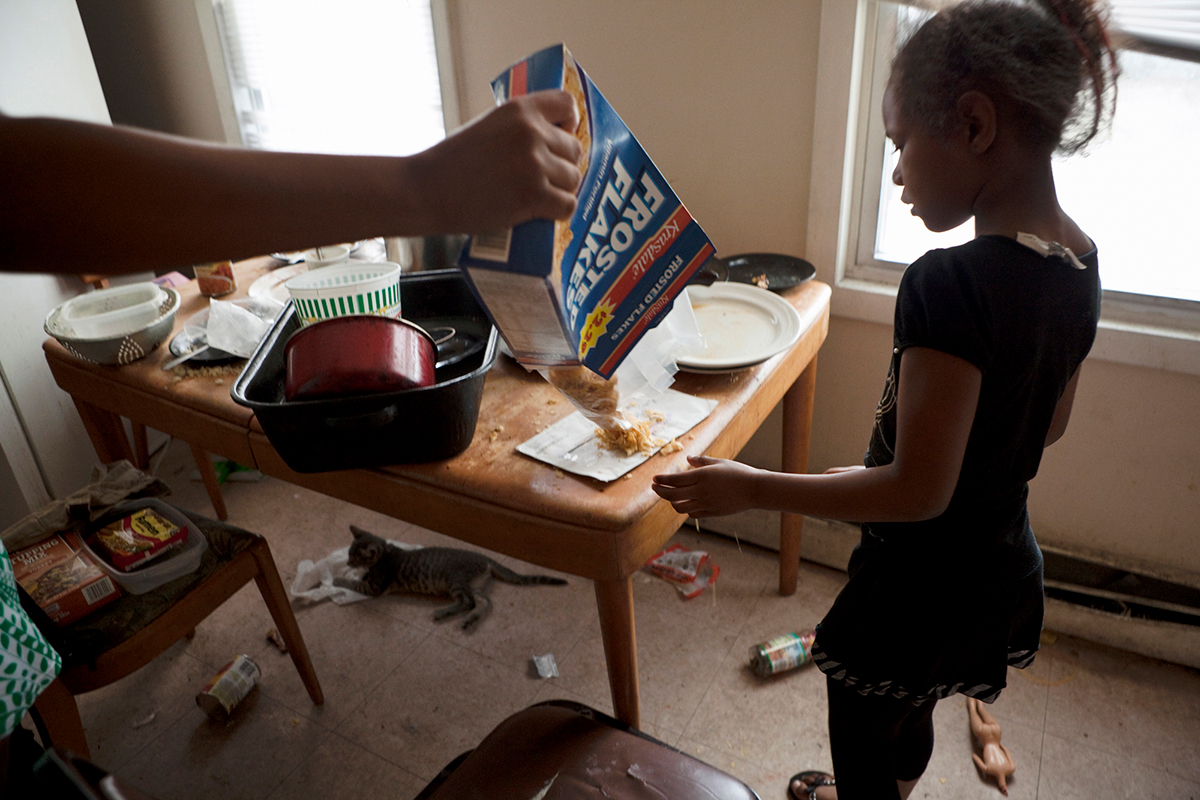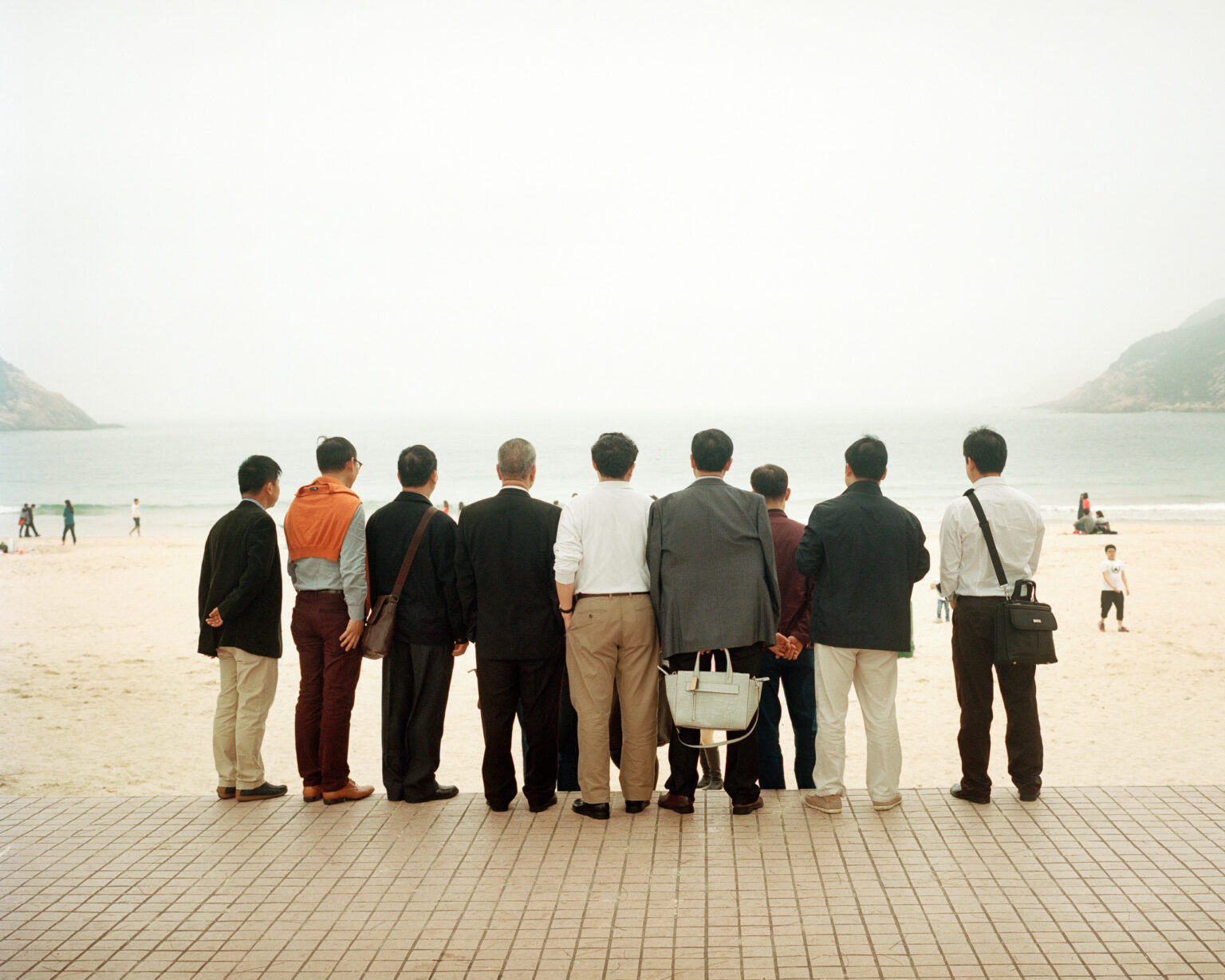Joseph Mobolaji Aina, is a Nigerian-British painter, whose work explores the intricacies of human nature and its relationship with society.
He holds a particular interest in contemporary identity, and the ways it interacts with popular culture as well as physical environments which forms the essence of his allegorical paintings. These creations reflect both his intellectual and physical surroundings, offering a unique perspective on the complexities of existence.
We recently visited Joseph at his West London studio to talk through his process, practice, and workspace, and the relationship between all three.

Can you take us through your creative process, starting from the inception of an idea to the completion of a finished piece?
I do not really like to go into my creative process too much. There is something magical about the viewer wondering how a painting was created. But conceptually I just like using the layering of paint as a tool to overlay segments of time. Eventually establishing a euphoric timeless state without the anxiety of the future or regrets of the past. When working spontaneously I collage moments from memory that resonate with this stillness and keep layering each moment like pieces of an argument till a resolution has been reached.
Each painting is about the power of the present, a reminder to make the most of this very moment before your eyes before it's gone forever.

Where do you find inspiration for your work?
I often go for walks and take photos of landscapes I find interesting. The process of taking photos almost imprints this photographic viewfinder in my brain that helps me spontaneously paint landscapes with more ease.
Your work delves into themes of identity, human nature, and societal interconnections. What draws you to explore these subjects in your art?
My Undergraduate Degree in law & Psychology laid the foundations for this. Additionally, I had a stammer at a young age, so I became used to watching people from a distance rather than interacting. This made me very curious about how people think and operate. Because at times my lack of interaction made me feel like a camera or a robot, observing but not feeling.
Your time at the Royal College of Art seems to have influenced your focus on analysing the presentation of black culture in the Western world. How has this research shaped your recent mask paintings and the exploration of 'Blackness' and identity crisis?
Being In Art school surrounded by the crisp white walls made me feel even more Black than I did before. In some sense, I felt that I was there because of my Blackness. Some form of imposter syndrome created this dynamic whereby I felt it necessary to create ‘Black Art’ to gain success in a white art world. I don’t think this really existed outside my head, however, practices such as creating an Artist statement made me feel like being black must be the focus of my art practice. In many ways this exploration was useful. As with this, I was able to create my mask series that looked directly into these very issues I describe. The feeling of being black in a white space; making you both an outsider where you reside and when you go back to your home country.
I still plan to develop this mask series further. However, since leaving the RCA and moving into my own studio space I have been focusing on my love of painting and the movement of the brush rather than ideas of race.


You recently spent time working in Nigeria, how did this influence or impact your creative process?
In Nigeria, I was reminded of how to be myself. Seeing my skin complexion on everyone surrounding me made it feel normal to be Black, I felt like I did not stand out. Sometimes growing up in the UK I felt like I had to ‘act black’ I did not feel this at all there. This allowed me to focus on my love for painting landscapes.
In Nigeria, it was also much more difficult to get hold of materials. The art shops had less range and there was often a lot of traffic to get there. This forced me to be much more conservative and decisive. It is through this way of thinking that I developed my ‘Poetic Fundamentals’ series.

This series focuses on taking only necessary action, it differs from minimalism in the sense that one’s approach must be adjusted according to the circumstance. This led to me using acrylic and chalk rather than oil paint and oil stick. I had small chalk pastel sticks that could only survive three or four strikes across the canvas.
This way of working was in synergy with the situation in Nigeria at the time whereby there was a shortage of cash. Meaning when shopping for groceries or socialising there were not the resources to facilitate the full extent of one's wants. There was something beautiful about this sense of discipline that helped in both my practice and lifestyle.
Your studio is quite stripped-back, with only essential items. Could you share your thoughts on why you have chosen to keep your workspace this way? What, in your opinion, are the crucial elements that contribute to creating a productive and inspiring studio space for your artistic practice?
Right now I've just moved in, so it's looking partially minimalist. But to answer your question, all I really need is my own space and a mark-making tool.
Being in a space to myself allows me to feel much more comfortable than in a shared studio. In psychology, it is often said an individual has a version of themselves that is in its fullest function when there isn't anyone around. It is this version of myself that I wish to access when creating my paintings. It allows me to reach my unique perspective and illustrate a genuine experience.

I don’t really need all the paintbrushes I own. There is a comfort I find in the process of using a single brush to recreate the same mark throughout a painting. My work has allowed me to understand the importance of movement in painting. As the process of painting is essentially the practice of moving material across a surface to make a mark.
Each painter’s movement is unique to them. By fully connecting with one’s own movement this is when you can create something 'new'. Thus, rather than using multiple brushes and methods of mark-making within a painting. I just like to focus on what works for me. Currently, that is the thick application of oil paint over an acrylic surface. The backdrop establishes a warm harmony between normally conflicting colours. Whilst the oil overlay mediates their relationship to ensure its longevity.
When one removes the reality that I must create a painting. Conceptually all I require in the studio is a mark-making tool and a surface to work on. There are still numerous ways I can demonstrate my movement and 'paint' even without physically painting. This is why I have recently become interested in performance art.
I do not do it myself, but the area of art has started to make more sense to me.

You can find more of Joseph's work on his website
Photography: Josh Bright.














